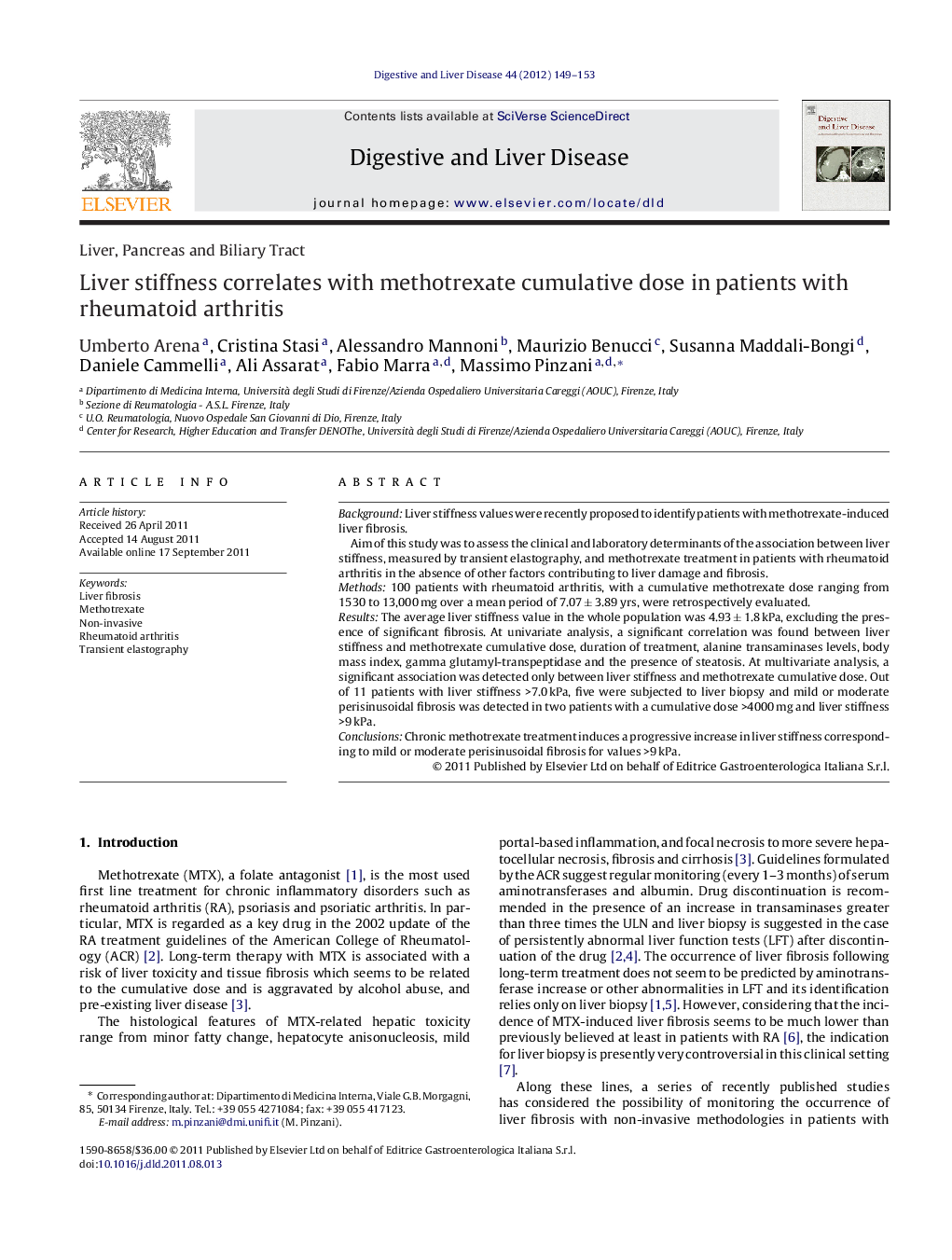| Article ID | Journal | Published Year | Pages | File Type |
|---|---|---|---|---|
| 3263224 | Digestive and Liver Disease | 2012 | 5 Pages |
BackgroundLiver stiffness values were recently proposed to identify patients with methotrexate-induced liver fibrosis.Aim of this study was to assess the clinical and laboratory determinants of the association between liver stiffness, measured by transient elastography, and methotrexate treatment in patients with rheumatoid arthritis in the absence of other factors contributing to liver damage and fibrosis.Methods100 patients with rheumatoid arthritis, with a cumulative methotrexate dose ranging from 1530 to 13,000 mg over a mean period of 7.07 ± 3.89 yrs, were retrospectively evaluated.ResultsThe average liver stiffness value in the whole population was 4.93 ± 1.8 kPa, excluding the presence of significant fibrosis. At univariate analysis, a significant correlation was found between liver stiffness and methotrexate cumulative dose, duration of treatment, alanine transaminases levels, body mass index, gamma glutamyl-transpeptidase and the presence of steatosis. At multivariate analysis, a significant association was detected only between liver stiffness and methotrexate cumulative dose. Out of 11 patients with liver stiffness >7.0 kPa, five were subjected to liver biopsy and mild or moderate perisinusoidal fibrosis was detected in two patients with a cumulative dose >4000 mg and liver stiffness >9 kPa.ConclusionsChronic methotrexate treatment induces a progressive increase in liver stiffness corresponding to mild or moderate perisinusoidal fibrosis for values >9 kPa.
